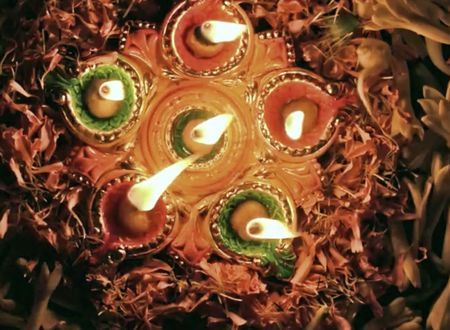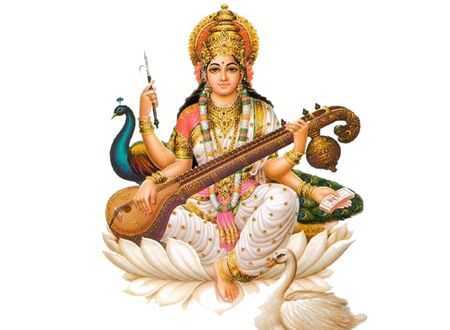As soon as my son got his new book bundle for Class XII , he tore it open and looked fervently for the new reading list . There were 3 books to be read as a part of English literature – Tuesdays with Morrie , The Kite Runner and The Palace of Illusions . Both of us love reading so we had a reading competition of sorts this weekend . Results ? He has finished all 3 books over Friday and Saturday whereas I just finished one – The Palace of Illusions . I protested, it was because the book made me reflect a lot . He agreed . “It is a radically different take on Mahabharata…..and I have a feeling you won’t like it “he muttered
For those who haven’t read it yet – The Palace of illusions is a bestseller by Chitra Banerjee Divakaruni which is like a retelling of the Mahabharata from Draupadi’s point of view. It etches out the life of the central characters , their character and motivations very differently . Kunti – the mother of Pandavas for instance is portrayed as an imperious and dominating mother-in-law( attributed to her life circumstances but nonetheless). The core thread of the book, however,is that Draupadi and Karna pined for each other all through their life. This dark secret is held from the time the attraction started- when Draupadi prohibited Karna from proving his skill at her Swayamvara. The attraction holds through ups and downs, war and peace, insults and honour right up till the very end. The book also highlights the social mileu wherein women were excluded from learning vedas , matters of the kingdom and religion but somehow found ways around these shackles . A brilliant read – it is however a controversial re take on some of the revered characters .
I felt similarly about the Maha Samar series penned by the legendary writer Dr Narendra Kohli who explained the dharma and motivation of each character minutely .Bheeshma was a bitter and rigid old man in his story and Gandhari a wily and imperious old woman who married Dhritrashthra with the intent of wiping out the Kuru dynasty. Yudhishthir was always cowering behind the precept of non violence and obedience and never stood up for Dharma .
Retellings and reinterpretations of the epics have been immensely popular in the recent times .Aside from the above, books by Ami Ganatara , Amish and Ananda Neelakantan have made it to the bestsellers list . Anand Neelkantan’s book Asura: The Tale of the Vanquished is a retelling of the Ramayana from Ravana’s stand point – and unearths the radical premise that Sita was Ravana’s daughter and that women were abused and treated quite unfairly in Ayodhya . Also, it proclaims that the Asura civilization was quite different and far more advanced vis-à-vis the Devas .
Taking creative liberties , the authors have interpreted and portrayed central characters of the epics very differently compared to the ‘original’ epics ( the original epic claim is also debatable as these were passed down through an oral tradition and might have been changed at some point in transmission). Clearly, their re telling is based on the modern ethos and their current values which may be radically different as for example Draupadi’s character was in the aforementioned book.
Where does the creative liberty become too much ? Where does this start to hurt? Where do our religious sentiments and cultural mores, so intricately linked with these stories start getting affected ? Some depicted Ma Kali as a smoking and drinking Goddess in a recent artwork ( in the name of freedom of expression) which lead to a lot of protests and political war mongering . Is that the invisible line between acceptability and blasphemy? I was horrified when talking to a group of youngsters I realized they thought the Hare Krishna mahamantra came from a 70s movie of actor Dev Anand and worse a recent bollywood flick with a foot tapping number that uses a part of the mantra.
How is it that the stories of spiritual icons in Santana Dharma are open to interpretation and for other religions they are not .
Stories at the end of the day are the most powerful media though which we instill cultural and religious values in the future generations . What will these retellings and retakes tell our children about our dharma , culture, history and icons? But then, aren’t the versions of these timeless epics we have grown up with – a form of re-telling too?
These are all thought provoking and controversial questions . I would love to hear your thoughts on this dear os.me family – whats your opinion- please share in the comments.
And while you think , here are some brilliant posts on dharma from os.me
The origin of Srimad Bhagvatam : S Vyas tells the beautiful story of origination of Srimad Bhagvatam and how Narada got his bhakti and his knowledge both.
Nyasa – Turning the body into a temple Swati Om shares insights on how the practice of doing nyasa as a part of mantra sadhna evokes energy and makes us respect this body as a sacred temple . Pre requisites and steps of learning scriptures: Ravi Om Trivedi explains and highlights how the 3 step process of shravnam , mañanam and Niddhidhyansam works to internalize the teachings of our scriptures. Listening attentively , reflecting and then putting into application is infact the best possible approach to learning any philosophy. Read on to internalize .
Adani Hindenburg and Ganesha : an intriguing title leads to an insightful post. It doesn’t just explain the rise and fall of Adani stock valuations , it explains the central thesis – nuance is important . In dharma and in business . Read on to discover.
Expansion of Consciousness Swami ji writes. That we all have the potential to be divine doesn’t mean we are already divine. He writes further “While an educated mind rejoices in the science of meditation which appeals greatly to them, you will be amazed at what all tapasya (penance) can do when done the Vedic way. A virtuous life (dharma), a disciplined lifestyle (purushartha), and a bit of time devoted to the Divine (ishvara pranidhana) is the Vedic way to expanding your consciousness. Take it up and your life will blossom in unimaginable ways.”
PS :Apologies for any inadvertent errors in this post as writing a post on the phone was quite challenging for me.









Comments & Discussion
10 COMMENTS
Please login to read members' comments and participate in the discussion.